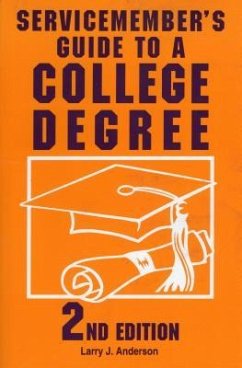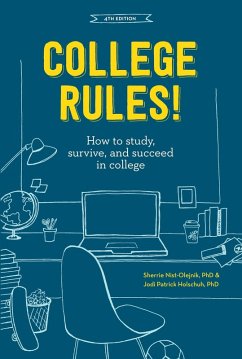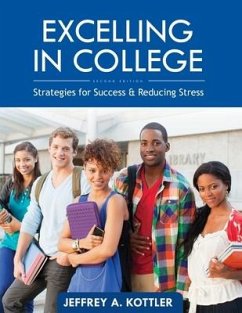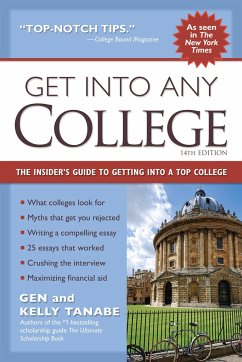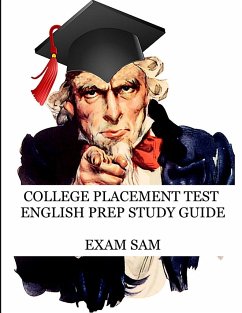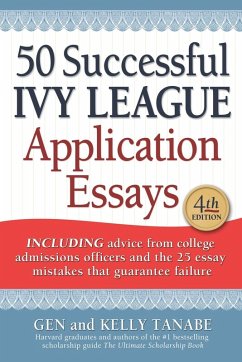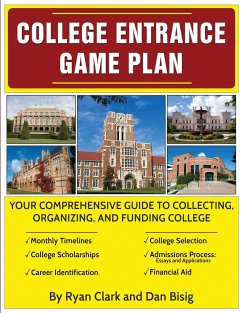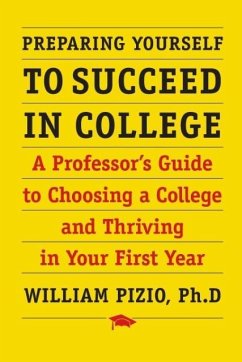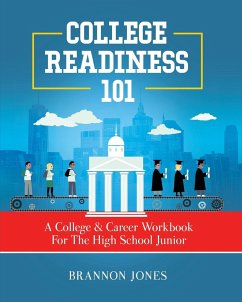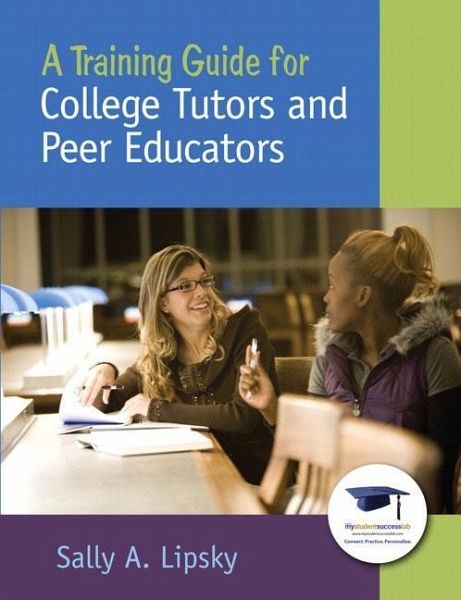
A Training Guide for College Tutors and Peer Educators
Versandkostenfrei!
Versandfertig in über 4 Wochen
59,99 €
inkl. MwSt.

PAYBACK Punkte
30 °P sammeln!
For courses in Training Tutors, Peer Education and Mentoring, Paraprofessional Helping and Leadership Strategies.
A Training Guide for College Tutors and Peer Educators presents relevant and research-based methods for successful academic support sessions for tutors and peer educator trainees in an adaptable, user-friendly, and interactive format.
By mirroring appropriate methods for organizing and presenting material in an academic support session, A Training Guide for College Tutors and Peer Educators allows the reader to experience for themselves the practices and strategies they will apply as future tutors and peer educators. Based on solid learning theory, the activities, assessments, examples and features included in this flexible and engaging text simulate recommended peer educator practices and emphasize guiding college students to become active, self-monitoring and independent learners.
While teaching readers the key, research-based elements of quality peer assistance, this first-edition guide also incorporates a comprehensive list of topics represented in certification programs. Peppered with practical examples and interactive problem-solving scenerios that readers can immediately apply in their positions, trainees will learn how to plan for sessions, how to assess students' learning, how to create collaborative activities, how to integrate college learning strategies, and how to approach common issues faced on the job.
Product Description
A Training Guide for College Tutors and Peer Educators presents relevant and research-based methods for successful academic support sessions for tutors and peer educator trainees in an adaptable, user-friendly, and interactive format.
By mirroring appropriate methods for organizing and presenting material in an academic support session, it allows the reader to experience for themselves the practices and strategies they will apply as future tutors and peer educators. Based on solid learning theory, the activities, assessments, examples and features included in this flexible and engaging text simulate recommended peer educator practices and emphasize guiding college students to become active, self-monitoring and independent learners.
While teaching readers the key, research-based elements of quality peer assistance, this first-edition guide also incorporates a comprehensive list of topics represented in certification programs. Peppered with practical examples and interactive problem-solving scenerios that readers can immediately apply in their positions, trainees will learn how to plan for sessions, how to assess students' learning, how to create collaborative activities, how to integrate college learning strategies, and how to approach common issues faced on the job.
Features + Benefits
The Instructor's Manual contains information and materials supportive of program certification for both tutoring services and course-based assistance.
A flexible format and structure make this text ideal for in-class training courses, online courses, non-credit workshops, or independent self-paced instruction so as to adapt to fit any school's needs. * Credit-bearing course: Text and accompanying supplements offer a blueprint for a training course. Included are a sample course syllabus with goals, objectives and outline of topics, and detailed suggestions for implementing topics and activities.
* Instructor-led or self-paced: Text and materials can be employed in either an instructor-led setting or as self-paced learning material. Instructions for each chapter are included in the Instructor’s materials.
* Non-credit: The text and supplements can be used in a series of non-credit workshops or topic-centered training seminars.
“Suggestions from Experienced Peer Educators” features offer answers to pertinent questions on topics such as assessing student understanding and creating student collaboration.
Interactive problem-solving scenarios and role-playing activities provides meaningful examples while actively involving and engaging the reader.
TECHNOLOGY AND PEARSON CHOICES
MyStudentSuccessLab ( www.mystudentsuccesslab.com ) is an online solution designed to help students ‘Start strong, Finish stronger’ by building skills for ongoing personal and professional development. This Learning Outcome based technology promotes student engagement through:
· The Learning Path Diagnostic offers for the course, 83 Full Course Pre- and Post-Diagnostic (Bloom’s Taxonomy Levels I-VI) questions, and for each topic, 20 Pre- and Post-Test (Bloom’s Taxonomy Levels I-VI) questions.
· The Overview provides learning objectives to build vocabulary and repetition.
· Video interviews on key issues ‘by students, for students’.
· The Practice exercises improve class preparation and learning.
· Graded Activities build critical thinking skills and develop problem-solving abilities (includes Essays and Journaling).
· Instructors benefit from an Implementation Guide to easily assign and assess progress.
· Students have access to relevant FinishStronger247 YouTube videos, the Pearson student Facebook page chock full of tips, MySearchLab use for doing effective research, and more.
.
PearsonChoices - CourseSmart and Custom Publishing. Having choices for how to deliver course content is important.
· CourseSmart Textbooks Online is an exciting new choice for students looking to save money. As an alternative to purchasing the print textbook, students can subscribe to the same content online and save up to 50% off the suggested list price of the print text. With a CourseSmart e-textbook, students can search the text, make notes online, print out reading assignments that incorporate lecture notes, and bookmark important passages for later review. For more information, or to subscribe, visit www.coursesmart.com .
· Pearson Custom Publishing allows professors to create their own professionally produced customized textbooks and media products to best complement their course. We offer high-quality content, professional design, quick production, and reliable on-time delivery. The result is a valuable textbook that students will use, cover to cover, tailored to meet exactly the needs of the professor, students, and course. Visit www.pearsoncustom.com .
Backcover
A Training Guide for College Tutors and Peer Educators provides a relevant, cross-disciplinary training manual for tutors, peer educators, academic mentors, and similar academic support leaders at the college level. The text covers research-based components of successful peer assistance in an adaptable, user-friendly, and interactive format.
Content focuses on how tutors and peer educators convey subject-related information as they guide students toward success with college-level course work. By means of engaging activities, application exercises, and self-reflection, readers gain valuable knowledge and practice for their tutorial roles. As they progress through chapters, readers rehearse and evaluate peer-helping techniques, the same techniques that they will apply in their jobs as tutors and peer educators.
Evidence indicates the importance and positive impact of adequate tutor training on the overall quality and success of an academic support program. As such, this text provides a comprehensive, uniform training experience so that tutors and peer educators can approach their jobs as prepared, skillful, and confident leaders.
Currently, there is an increasing push to certify programs according to standards of success and accountability. The text chapters incorporate topics needed for certification from:
College Reading Learning Association (CRLA) - Tutoring Programs
National Association for Developmental Education (NADE) - Course-Based Learning Assistance
Furthermore, the Instructor's Manual contains information and materials to use when applying for any level of certification.
Highlights include:
-Relevant to training needs. Chapter setup and activities mirror recommended tutorial practices.
-Comprehensive coverage of topics with support materials.
-Engaging, interactive format.
-Flexible for variety of delivery systems (credit-bearing or noncredit; instructor-led, self-paced, or distance education settings)
-User-friendly for reader and instructor.
-Supports certification.
Start strong. Finish stronger.
www.MyStudentSuccessLab.com
Preface
Chapter 1 - The Power of Peers: Your Role as a Peer Educator
Opening: Focus Questions
What is a Peer Educator?
Role of a Peer Educator
Activity 1.1: Andragogy and Peer Assistance
Facilitator of Learning
Peer Educator's Role and Development of Students
Benefits for You, the Peer Educator
Activity 1.2: Interviewing
Learning Strategy: Managing Your Time
Activity 1.3: Assess Your Time Management Skills
Strategies for Improving Time Management
Setting Goals
Activity 1.4: Personal Goal
Closing
Activity 1.5: Check Your Understanding
Activity 1.6: Elements of Effective Peer-Led Sessions
Suggestions from Experienced Peer Educators
How do you incorporate learning and study strategies?
Chapter 2 - Promoting Active Learning
Opening: Focus Questions
Active Learning
Activity 2.1: Promoting Active Learning
How Learning Occurs
Information Processing Model
Activity 2.2: Information Processing and Learning Strategies
Activity 2.3: Applying the Information Processing Model
Differences in Learning
Visual, Auditory, Tactile/Kinesthetic Preferences
Activity 2.4: Assessing Learning Modalities
Activity 2.5: Analyzing Learning Modalities
Personality Type
Activity 2.6: Assessment
Description of the Dimensions
Activity 2.7: Reflecting
Activity 2.8: Learning Preferences and Learning Strategies
Closing
Activity 2.9: How do you learn best?
Activity 2.10: Checking for Understanding
Activity 2.11: Applying
Suggestions from Experienced Peer Educators
How do you increase active participation?
Chapter 3 - Incorporating Critical Thinking and Questioning Skills
Opening: Reading Textbooks
Activity 3.1: Practice Previewing
Introduction
Talk Out Loud
Activity 3.2: Practice Cognitive Process Instruction
Include Questions
Activity 3.3: Integrating Questions in Sessions
Activity 3.4: Observing
Include Higher-Level Directives
Activity 3.5: Directive Words
Activity 3.6: Critiquing
Closing
Activity 3.7: Analyzing
Activity 3.8: Elements of Effective Peer-Led Sessions
Suggestions from Experienced Peer Educators
How do you encourage critical thinking?
Chapter 4 - Assessing Students' Learning
Opening: Self-Assessment
Why Assess Students' Learning?
Activity 4.1: Reflecting
How to Assess Students' Learning?
Beginning of Session
Activity 4.2: Assessment Example
Middle of Session
Activity 4.3: Try it Out
End of Session
Activity 4.4: Thinking and Assessing
What Is and Is Not Adequate Evidence of Learning?
Activity 4.5: Observation
Closing
Activity 4.6: Practice Summative Assessment
Learning Strategy: Preparing for Exams
Activity 4.7: Exam Preparation
Activity 4.8: Summarizing Important Information
Suggestions from Experienced Peer Educators
How do you assess students' understanding?
Chapter 5 - Collaborative Learning and Group Work
Opening: Predicting
Collaborative Learning
Activity 5.1: Examples of Collaborative Learning
Collaborative Learning Guidelines
Group Configurations
Activity 5.2: Observing
Dealing with Common Problems
Activity 5.3: Responding to Problems
Planning Sessions
Activity 5.4: Plan a session
Closing
Learning Strategy: Graphic Organizers
Activity 5.5: Collaborative Graphic Organizer
Activity 5.6: Check for Understanding
Suggestions from Experienced Peer Educators
How do you create collaboration among students?
Chapter 6 - Tutoring as a Proactive Process
Opening: Highlighting and Annotating
Activity 6.1: Guidelines
Activity 6.2: Applying
Introduction
A Proactive Model
&nb
A Training Guide for College Tutors and Peer Educators presents relevant and research-based methods for successful academic support sessions for tutors and peer educator trainees in an adaptable, user-friendly, and interactive format.
By mirroring appropriate methods for organizing and presenting material in an academic support session, A Training Guide for College Tutors and Peer Educators allows the reader to experience for themselves the practices and strategies they will apply as future tutors and peer educators. Based on solid learning theory, the activities, assessments, examples and features included in this flexible and engaging text simulate recommended peer educator practices and emphasize guiding college students to become active, self-monitoring and independent learners.
While teaching readers the key, research-based elements of quality peer assistance, this first-edition guide also incorporates a comprehensive list of topics represented in certification programs. Peppered with practical examples and interactive problem-solving scenerios that readers can immediately apply in their positions, trainees will learn how to plan for sessions, how to assess students' learning, how to create collaborative activities, how to integrate college learning strategies, and how to approach common issues faced on the job.
Product Description
A Training Guide for College Tutors and Peer Educators presents relevant and research-based methods for successful academic support sessions for tutors and peer educator trainees in an adaptable, user-friendly, and interactive format.
By mirroring appropriate methods for organizing and presenting material in an academic support session, it allows the reader to experience for themselves the practices and strategies they will apply as future tutors and peer educators. Based on solid learning theory, the activities, assessments, examples and features included in this flexible and engaging text simulate recommended peer educator practices and emphasize guiding college students to become active, self-monitoring and independent learners.
While teaching readers the key, research-based elements of quality peer assistance, this first-edition guide also incorporates a comprehensive list of topics represented in certification programs. Peppered with practical examples and interactive problem-solving scenerios that readers can immediately apply in their positions, trainees will learn how to plan for sessions, how to assess students' learning, how to create collaborative activities, how to integrate college learning strategies, and how to approach common issues faced on the job.
Features + Benefits
The Instructor's Manual contains information and materials supportive of program certification for both tutoring services and course-based assistance.
A flexible format and structure make this text ideal for in-class training courses, online courses, non-credit workshops, or independent self-paced instruction so as to adapt to fit any school's needs. * Credit-bearing course: Text and accompanying supplements offer a blueprint for a training course. Included are a sample course syllabus with goals, objectives and outline of topics, and detailed suggestions for implementing topics and activities.
* Instructor-led or self-paced: Text and materials can be employed in either an instructor-led setting or as self-paced learning material. Instructions for each chapter are included in the Instructor’s materials.
* Non-credit: The text and supplements can be used in a series of non-credit workshops or topic-centered training seminars.
“Suggestions from Experienced Peer Educators” features offer answers to pertinent questions on topics such as assessing student understanding and creating student collaboration.
Interactive problem-solving scenarios and role-playing activities provides meaningful examples while actively involving and engaging the reader.
TECHNOLOGY AND PEARSON CHOICES
MyStudentSuccessLab ( www.mystudentsuccesslab.com ) is an online solution designed to help students ‘Start strong, Finish stronger’ by building skills for ongoing personal and professional development. This Learning Outcome based technology promotes student engagement through:
· The Learning Path Diagnostic offers for the course, 83 Full Course Pre- and Post-Diagnostic (Bloom’s Taxonomy Levels I-VI) questions, and for each topic, 20 Pre- and Post-Test (Bloom’s Taxonomy Levels I-VI) questions.
· The Overview provides learning objectives to build vocabulary and repetition.
· Video interviews on key issues ‘by students, for students’.
· The Practice exercises improve class preparation and learning.
· Graded Activities build critical thinking skills and develop problem-solving abilities (includes Essays and Journaling).
· Instructors benefit from an Implementation Guide to easily assign and assess progress.
· Students have access to relevant FinishStronger247 YouTube videos, the Pearson student Facebook page chock full of tips, MySearchLab use for doing effective research, and more.
.
PearsonChoices - CourseSmart and Custom Publishing. Having choices for how to deliver course content is important.
· CourseSmart Textbooks Online is an exciting new choice for students looking to save money. As an alternative to purchasing the print textbook, students can subscribe to the same content online and save up to 50% off the suggested list price of the print text. With a CourseSmart e-textbook, students can search the text, make notes online, print out reading assignments that incorporate lecture notes, and bookmark important passages for later review. For more information, or to subscribe, visit www.coursesmart.com .
· Pearson Custom Publishing allows professors to create their own professionally produced customized textbooks and media products to best complement their course. We offer high-quality content, professional design, quick production, and reliable on-time delivery. The result is a valuable textbook that students will use, cover to cover, tailored to meet exactly the needs of the professor, students, and course. Visit www.pearsoncustom.com .
Backcover
A Training Guide for College Tutors and Peer Educators provides a relevant, cross-disciplinary training manual for tutors, peer educators, academic mentors, and similar academic support leaders at the college level. The text covers research-based components of successful peer assistance in an adaptable, user-friendly, and interactive format.
Content focuses on how tutors and peer educators convey subject-related information as they guide students toward success with college-level course work. By means of engaging activities, application exercises, and self-reflection, readers gain valuable knowledge and practice for their tutorial roles. As they progress through chapters, readers rehearse and evaluate peer-helping techniques, the same techniques that they will apply in their jobs as tutors and peer educators.
Evidence indicates the importance and positive impact of adequate tutor training on the overall quality and success of an academic support program. As such, this text provides a comprehensive, uniform training experience so that tutors and peer educators can approach their jobs as prepared, skillful, and confident leaders.
Currently, there is an increasing push to certify programs according to standards of success and accountability. The text chapters incorporate topics needed for certification from:
College Reading Learning Association (CRLA) - Tutoring Programs
National Association for Developmental Education (NADE) - Course-Based Learning Assistance
Furthermore, the Instructor's Manual contains information and materials to use when applying for any level of certification.
Highlights include:
-Relevant to training needs. Chapter setup and activities mirror recommended tutorial practices.
-Comprehensive coverage of topics with support materials.
-Engaging, interactive format.
-Flexible for variety of delivery systems (credit-bearing or noncredit; instructor-led, self-paced, or distance education settings)
-User-friendly for reader and instructor.
-Supports certification.
Start strong. Finish stronger.
www.MyStudentSuccessLab.com
Preface
Chapter 1 - The Power of Peers: Your Role as a Peer Educator
Opening: Focus Questions
What is a Peer Educator?
Role of a Peer Educator
Activity 1.1: Andragogy and Peer Assistance
Facilitator of Learning
Peer Educator's Role and Development of Students
Benefits for You, the Peer Educator
Activity 1.2: Interviewing
Learning Strategy: Managing Your Time
Activity 1.3: Assess Your Time Management Skills
Strategies for Improving Time Management
Setting Goals
Activity 1.4: Personal Goal
Closing
Activity 1.5: Check Your Understanding
Activity 1.6: Elements of Effective Peer-Led Sessions
Suggestions from Experienced Peer Educators
How do you incorporate learning and study strategies?
Chapter 2 - Promoting Active Learning
Opening: Focus Questions
Active Learning
Activity 2.1: Promoting Active Learning
How Learning Occurs
Information Processing Model
Activity 2.2: Information Processing and Learning Strategies
Activity 2.3: Applying the Information Processing Model
Differences in Learning
Visual, Auditory, Tactile/Kinesthetic Preferences
Activity 2.4: Assessing Learning Modalities
Activity 2.5: Analyzing Learning Modalities
Personality Type
Activity 2.6: Assessment
Description of the Dimensions
Activity 2.7: Reflecting
Activity 2.8: Learning Preferences and Learning Strategies
Closing
Activity 2.9: How do you learn best?
Activity 2.10: Checking for Understanding
Activity 2.11: Applying
Suggestions from Experienced Peer Educators
How do you increase active participation?
Chapter 3 - Incorporating Critical Thinking and Questioning Skills
Opening: Reading Textbooks
Activity 3.1: Practice Previewing
Introduction
Talk Out Loud
Activity 3.2: Practice Cognitive Process Instruction
Include Questions
Activity 3.3: Integrating Questions in Sessions
Activity 3.4: Observing
Include Higher-Level Directives
Activity 3.5: Directive Words
Activity 3.6: Critiquing
Closing
Activity 3.7: Analyzing
Activity 3.8: Elements of Effective Peer-Led Sessions
Suggestions from Experienced Peer Educators
How do you encourage critical thinking?
Chapter 4 - Assessing Students' Learning
Opening: Self-Assessment
Why Assess Students' Learning?
Activity 4.1: Reflecting
How to Assess Students' Learning?
Beginning of Session
Activity 4.2: Assessment Example
Middle of Session
Activity 4.3: Try it Out
End of Session
Activity 4.4: Thinking and Assessing
What Is and Is Not Adequate Evidence of Learning?
Activity 4.5: Observation
Closing
Activity 4.6: Practice Summative Assessment
Learning Strategy: Preparing for Exams
Activity 4.7: Exam Preparation
Activity 4.8: Summarizing Important Information
Suggestions from Experienced Peer Educators
How do you assess students' understanding?
Chapter 5 - Collaborative Learning and Group Work
Opening: Predicting
Collaborative Learning
Activity 5.1: Examples of Collaborative Learning
Collaborative Learning Guidelines
Group Configurations
Activity 5.2: Observing
Dealing with Common Problems
Activity 5.3: Responding to Problems
Planning Sessions
Activity 5.4: Plan a session
Closing
Learning Strategy: Graphic Organizers
Activity 5.5: Collaborative Graphic Organizer
Activity 5.6: Check for Understanding
Suggestions from Experienced Peer Educators
How do you create collaboration among students?
Chapter 6 - Tutoring as a Proactive Process
Opening: Highlighting and Annotating
Activity 6.1: Guidelines
Activity 6.2: Applying
Introduction
A Proactive Model
&nb
For courses in Training Tutors, Peer Education and Mentoring, Paraprofessional Helping and Leadership Strategies. A Training Guide for College Tutors and Peer Educators presents relevant and research-based methods for successful academic support sessions for tutors and peer educator trainees in an adaptable, user-friendly, and interactive format. By mirroring appropriate methods for organizing and presenting material in an academic support session, A Training Guide for College Tutors and Peer Educators allows the reader to experience for themselves the practices and strategies they will apply as future tutors and peer educators. Based on solid learning theory, the activities, assessments, examples and features included in this flexible and engaging text simulate recommended peer educator practices and emphasize guiding college students to become active, self-monitoring and independent learners. While teaching readers the key, research-based elements of quality peer assistance, this first-edition guide also incorporates a comprehensive list of topics represented in certification programs. Peppered with practical examples and interactive problem-solving scenerios that readers can immediately apply in their positions, trainees will learn how to plan for sessions, how to assess studentsGÇÖ learning, how to create collaborative activities, how to integrate college learning strategies, and how to approach common issues faced on the job.



